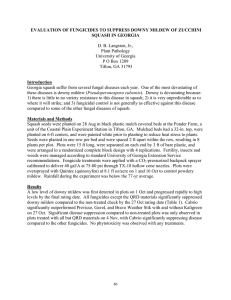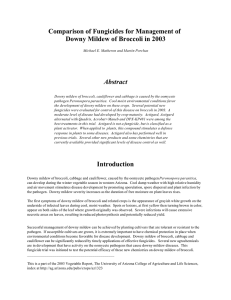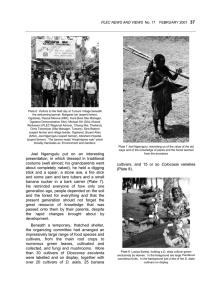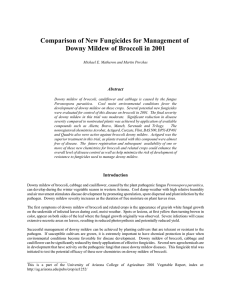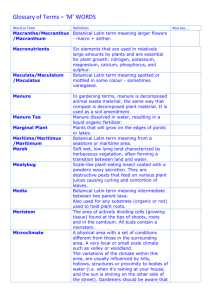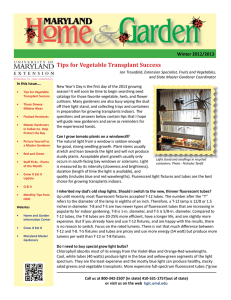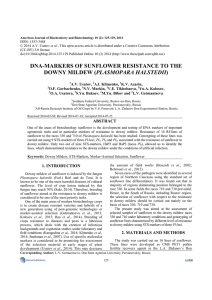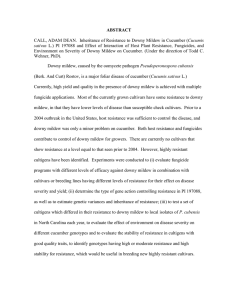Document 11069274
advertisement
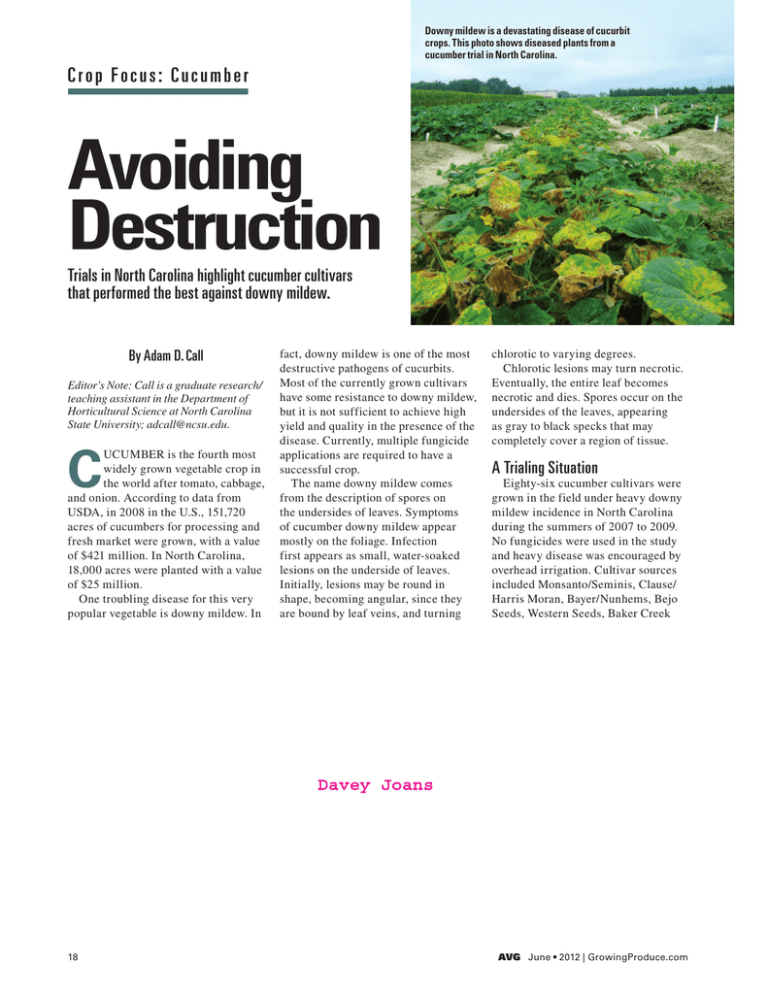
Downy mildew is a devastating disease of cucurbit crops. This photo shows diseased plants from a cucumber trial in North Carolina. Crop Focus: Cucumber Avoiding Destruction Trials in North Carolina highlight cucumber cultivars that performed the best against downy mildew. By Adam D. Call Editor’s Note: Call is a graduate research/ teaching assistant in the Department of Horticultural Science at North Carolina State University; adcall@ncsu.edu. C UCUMBER is the fourth most widely grown vegetable crop in the world after tomato, cabbage, and onion. According to data from USDA, in 2008 in the U.S., 151,720 acres of cucumbers for processing and fresh market were grown, with a value of $421 million. In North Carolina, 18,000 acres were planted with a value of $25 million. One troubling disease for this very popular vegetable is downy mildew. In fact, downy mildew is one of the most destructive pathogens of cucurbits. Most of the currently grown cultivars have some resistance to downy mildew, but it is not sufficient to achieve high yield and quality in the presence of the disease. Currently, multiple fungicide applications are required to have a successful crop. The name downy mildew comes from the description of spores on the undersides of leaves. Symptoms of cucumber downy mildew appear mostly on the foliage. Infection first appears as small, water-soaked lesions on the underside of leaves. Initially, lesions may be round in shape, becoming angular, since they are bound by leaf veins, and turning chlorotic to varying degrees. Chlorotic lesions may turn necrotic. Eventually, the entire leaf becomes necrotic and dies. Spores occur on the undersides of the leaves, appearing as gray to black specks that may completely cover a region of tissue. A Trialing Situation Eighty-six cucumber cultivars were grown in the field under heavy downy mildew incidence in North Carolina during the summers of 2007 to 2009. No fungicides were used in the study and heavy disease was encouraged by overhead irrigation. Cultivar sources included Monsanto/Seminis, Clause/ Harris Moran, Bayer/Nunhems, Bejo Seeds, Western Seeds, Baker Creek Davey Joans 18 AVG June • 2012 | GrowingProduce.com To produce high-yielding crops, growers need to choose the varieties that performed well in heavy disease situations. GrowingProduce.com | June • 2012 AVG comes available, growers would likely benefit by growing those cultivars that we have shown to perform well for disease and yield. Growing cultivars with high tolerance to downy mildew may allow fewer fungicide applications and, in turn, reduce cost to growers. Growers should consider this data, along with Extension information, to make the best decisions possible when choosing cultivars to grow each year. AVG Photo credit: Adam Call Heirloom Seeds, United Genetics, North Carolina State University, and check cultivars. Plots were rated weekly using a scale of 0 to 9 (0 equals no incidence of disease, 1 to 2 equals trace, 3 to 4 equals slight, 5 to 6 equals moderate, 7 to 8 equals severe, and 9 equals dead plants). Data collected included dis- ease incidence and marketable yield. Cultivars showing the least incidence of disease in this study averaged over three years were Wautoma, Picklet, Poinsett 76, NC-Davie, Pony, Stonewall, Cates, HM 82, and Excel, ranging from a mean of 3.8 to 4.3 on the 0 to 9 scale. Yield was collected at Castle Hayne, NC, in 2008, and Clinton, NC, in 2009. The highest yielding averaged over both years were Cates, Starex, Pony, Vlasspear, Classy, and Fancipak. The highest yield achieved was the cultivar Cates in Clinton, in 2009, with 22,800 pounds per acre. None of the cultivars tested in this study showed a high level of resistance, although differences in cultivars still exist. Until new resistance beRIGHT: Adam Call, a research assistant at North Carolina State University, conducted trials from 2007 to 2009, to determine which cucumber cultivars fared the best when faced with high incidence of downy mildew. 19

